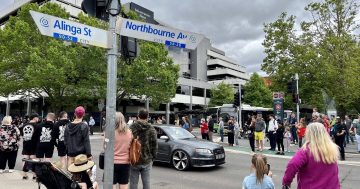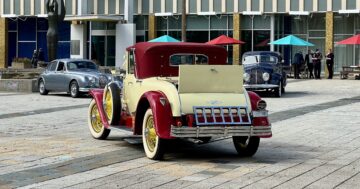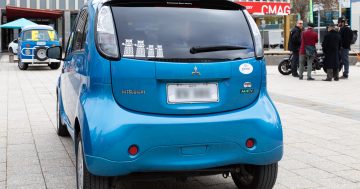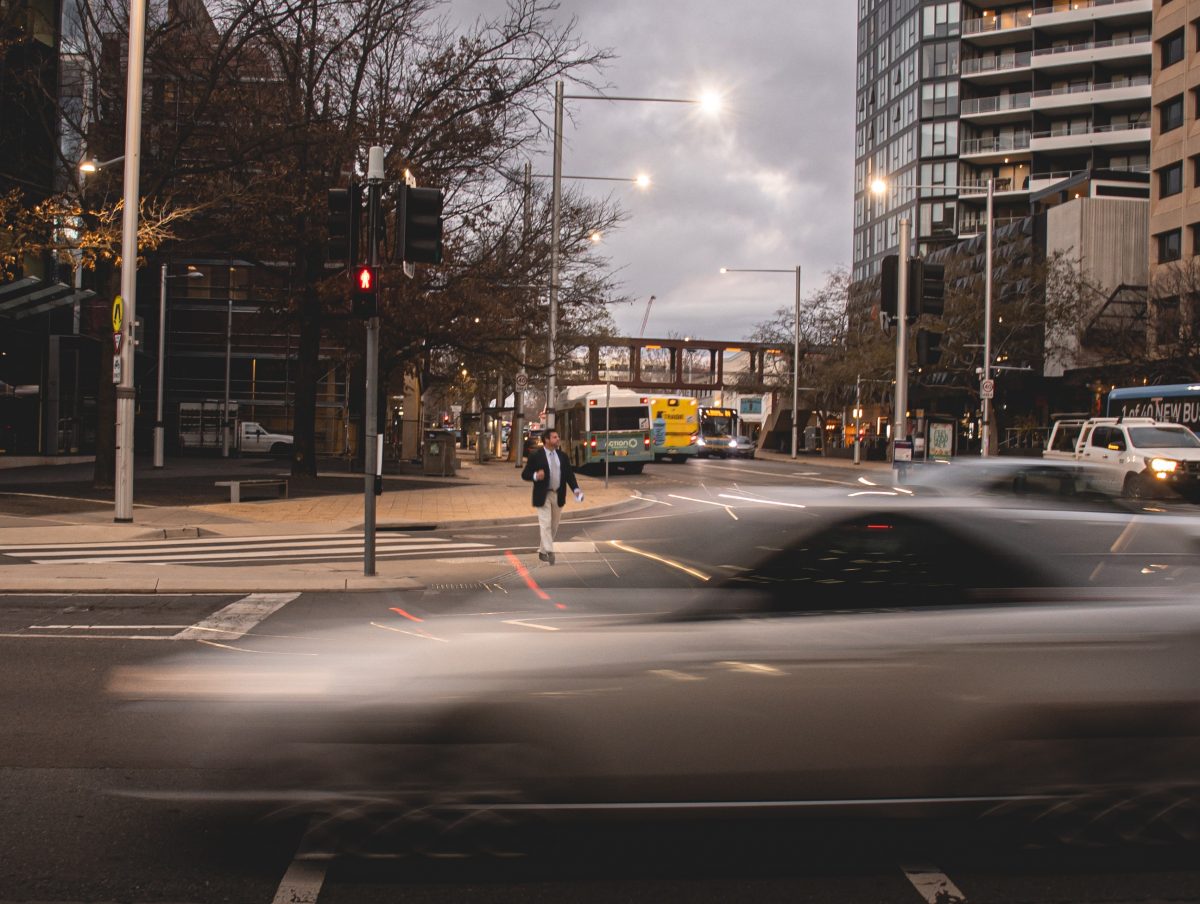
ACT Labor backbencher Suzanne Orr moved a motion to sign up to the Green and Healthy Streets Accelerator. Photo: Daniel Morton.
Petrol and diesel-powered cars could be banned from driving through a “significant area” of Canberra within six years, in a new pledge supported by the ACT Government.
Signatories to the Green and Healthy Streets Accelerator agree to “designate a significant area of the city as zero emission by 2030” and “procure only zero-emission buses from 2025”.
It’s one of several ‘Accelerators’ launched over the years by climate-action group C40 Cities.
Chaired by Mayor of London Sadiq Khan, C40 Cities describes itself as “a global network of nearly 100 mayors of the world’s leading cities that are united in action to confront the climate crisis”.
“Mayors of C40 cities are committed to using an inclusive, science-based and collaborative approach to cut their fair share of emissions in half by 2030, help the world limit global heating to 1.5 degrees Celsius, and build healthy, equitable and resilient communities,” the website reads.
In Australia, Sydney and Melbourne have signed up for several of the group’s other efforts, including the Net Zero Carbon Buildings Accelerator, Towards Zero Waste Accelerator and Renewable Energy Accelerator.
But last week, ACT Labor backbencher Suzanne Orr moved a motion for Canberra to join more than 35 cities – including Auckland, London, Copenhagen, Amsterdam, Barcelona, Seattle, Seoul, Tokyo and Vancouver – in signing the Green and Healthy Streets Accelerator.
“Signatory cities are committed to transforming their cities into greener, healthier and more prosperous places to live, with a focus on increasing the rates of walking and cycling and ensuring the use of public and shared transport is accessible to all citizens,” she said.
“Signing the pledge makes complete sense and will encourage us to meet these goals as soon as possible.”
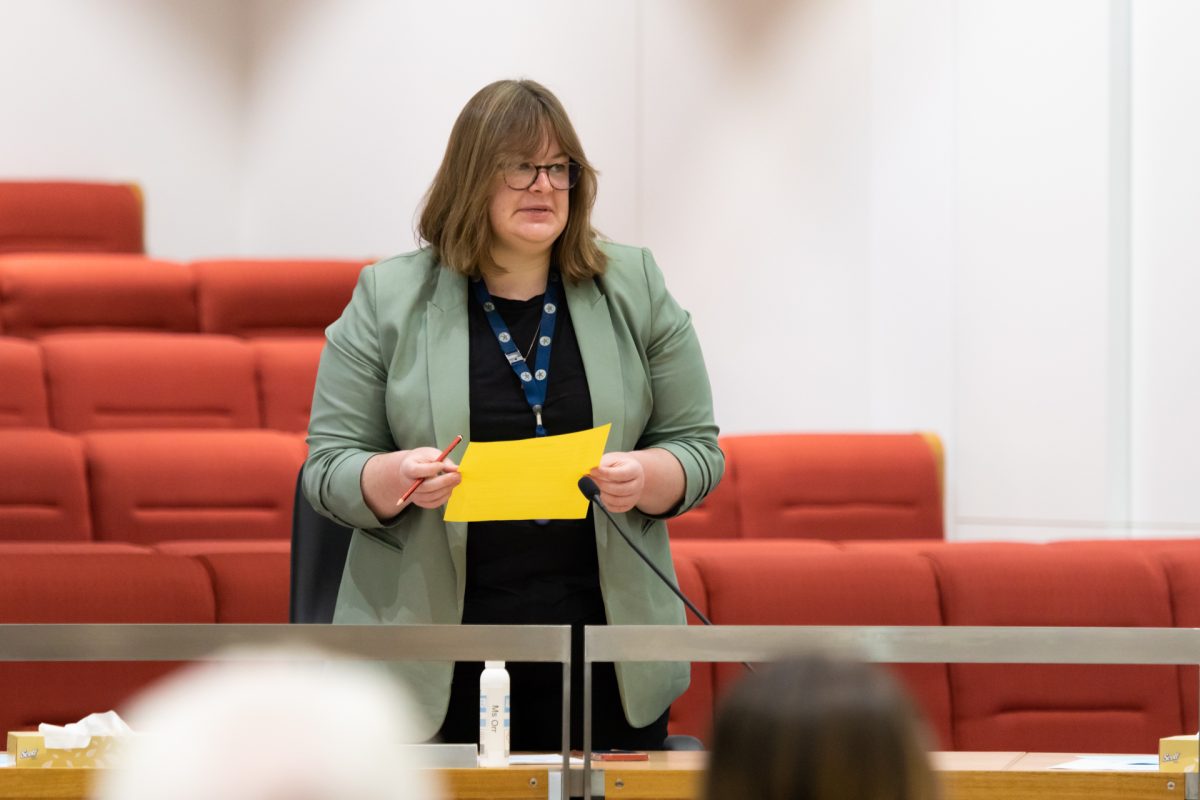
Suzanne Orr is seeking to make Canberra a greener, healthier place to live. Photo: Michelle Kroll.
The motion passed with the support of the ACT Government, chiefly Minister for Transport Chris Steel and Minister for Water, Energy and Emissions Reduction Shane Rattenbury, who cited a new wave of electric buses and the record number of EV registrations as proof Canberra is already on the way.
“The ACT Government is already a world leader in transitioning to zero-emission vehicles and our commitment to building vibrant and sustainable streets, and it’s why we are proud to support Ms Orr’s motion,” Mr Steel said.
But Shadow Minister for Transport Mark Parton had his doubts.
“You’re asking us to sign a pledge that says we’re going to rope off a major area of our city and make it zero-emission in a little over six years?” he asked.
“How does that work?”
Mr Parton gave the example of the Low-Emission Zone (LEZ) in Barcelona, Spain, which covers an area of 95 square kilometres and prevents vehicles without an “environmental badge” from entering.
“For argument’s sake, if we took that zone and laid it over Canberra, we’d be talking about a zone that would stretch from Woden to Mitchell,” he said.
While Canberra might have less than a third of the population of Barcelona, plenty of other cities have moved to establish no-go zones for petrol and diesel-powered vehicles.
The centre of London, for instance, is designated an ‘Ultra Low Emission Zone’ (ULEZ), where drivers of vehicles not powered by either electricity or hydrogen have to pay a £12.50 congestion charge to enter. There are plans to expand this “across all London boroughs” from August.

A sketch of a future Canberra intersection, as outlined in the new draft Design Guide. Photo: ACT Government.
Oslo, the capital of Norway, put in place a ‘toll-ring’ system which makes it more expensive for owners of diesel and petrol cars the closer they get to the centre, while EV owners enjoy heavy discounts. It’s also preparing to pilot a full-on zero-emission zone later this year.
The ACT Government has already outlined plans to follow these “best-practice” principles by not only banning the sale of new fossil-fuel cars from 2030, but also promising to prioritise ‘active travel’ in all new and upgraded streets.
The draft design guide, now open for public feedback on the YourSay Conversations website, includes designs that echo many European cities with narrower roads, more shared zones and intersections either shrunk or swapped out for more cycle lanes and walking paths.
While the ACT Government has yet to release a timeframe on when it will sign the Green and Healthy Streets Accelerator or reveal what it will mean for Canberra, it’s safe to say a ‘Zero Emission Area’ (ZEA) of some form isn’t far away.












